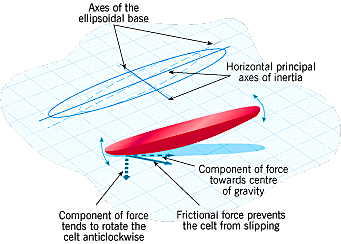
What you need:
- Lots of empty food cans. Look for the ones which have crimped lids at both ends. You'll need 4 or more cans per musical instrument.
- A can opener. The kind that takes just the lid off, leaving the crimped rim.
- Tape. Ordinary sticky tape will do, but best of all is electrician's insulation tape - you can stretch it a bit to make it really tight.
What to do:
NB Be very, very careful of sharp edges. Good can openers will leave a smooth edge, but even if you think you have one of those, take care when handling the can.
- Keep one can back - we'll come back to it in a moment.
- Wash the cans out, and remove both ends from them. If they go all floppy at this point, you have the wrong sort of can opener. Or the wrong sort of can. Or both.
- Join the cans end-to-end, and tape them very tightly, so you're making a single, rigid cylinder. A cylinder three cans long is enough, but four, five or six cans will work too. Go back to the can you held back, and add it to the end of your cylinder so you have a tube, closed at just one end. It may not look like much, but you've just made a musical instrument.
- Hold it lightly, and bash the closed end on the ground - you should hear the cylinder ring with a surprisingly pleasant note. I usually find it works best on carpet, and if you tilt the tube slightly so you're bashing the rim at an angle rather than the end, flat-on. If you make a number of cylinders of different lengths you'll find they play different notes - so you can drum away to your heart's content.
What's going on:
When you bash the tube, you start it ringing with a wide range of frequencies, but very quickly one note dominates - the natural frequency of the cylinder. The longer the cylinder, the lower the natural frequency - the lower the note.
My assumption is that the main wavelength produced is a little over twice the length of the tube, but without investigating with a spectrum analyser it's hard to know - let me know if you try. More mysterious is why the sound produced is so pleasant, when you'd expect a ghastly metallic clank. But then, musical instruments - even ones made out of old soup tins - are more an art than a science.
Incidentally, you need the double-rimmed cans because the other kind are too floppy when you take the base off. Many very cheap cans are stamped out of a single piece of aluminium with a lid added - they have rounded bases that are musically useless.
Find more practicals you can do at home on the practical of the week link below.



 Dolphins have the ability to call each other by name - just like humans! Scientists have found the mammals recognise themselves and other members of their species with special whistles. Up until now, humans were thought to be the only species that actually use names for one another.
Dolphins have the ability to call each other by name - just like humans! Scientists have found the mammals recognise themselves and other members of their species with special whistles. Up until now, humans were thought to be the only species that actually use names for one another.
 The rattleback, or celt, is one of those science toys that seems so simple, yet behaves in a highly counterintuitive way. It has fascinated people of all ages-- and challenged even accomplished scientists.
The rattleback, or celt, is one of those science toys that seems so simple, yet behaves in a highly counterintuitive way. It has fascinated people of all ages-- and challenged even accomplished scientists. Take an ancient Celtic axe, place it on a flat surface, spin it, and you'll find two surprises. Firstly, it doesn't behave as you'd expect. Secondly, you have an ancient Celtic axe? Really
Take an ancient Celtic axe, place it on a flat surface, spin it, and you'll find two surprises. Firstly, it doesn't behave as you'd expect. Secondly, you have an ancient Celtic axe? Really You may be quite happy listening to the Gorillaz on your iPod but how about chimpanzees? Professor Steve Jones of University College London tackles the thorny issue of 'why creationism is wrong and evolution is right' in a podcast downloadable from the Royal Society's web site. During a lecture that is in turn engaging, humorous, and stimulating, Steve explains how evolution can be seen at work today in the AIDS epidemic and even the manufacturing of washing powder. It is very entertaining and thought provoking.
You may be quite happy listening to the Gorillaz on your iPod but how about chimpanzees? Professor Steve Jones of University College London tackles the thorny issue of 'why creationism is wrong and evolution is right' in a podcast downloadable from the Royal Society's web site. During a lecture that is in turn engaging, humorous, and stimulating, Steve explains how evolution can be seen at work today in the AIDS epidemic and even the manufacturing of washing powder. It is very entertaining and thought provoking.


